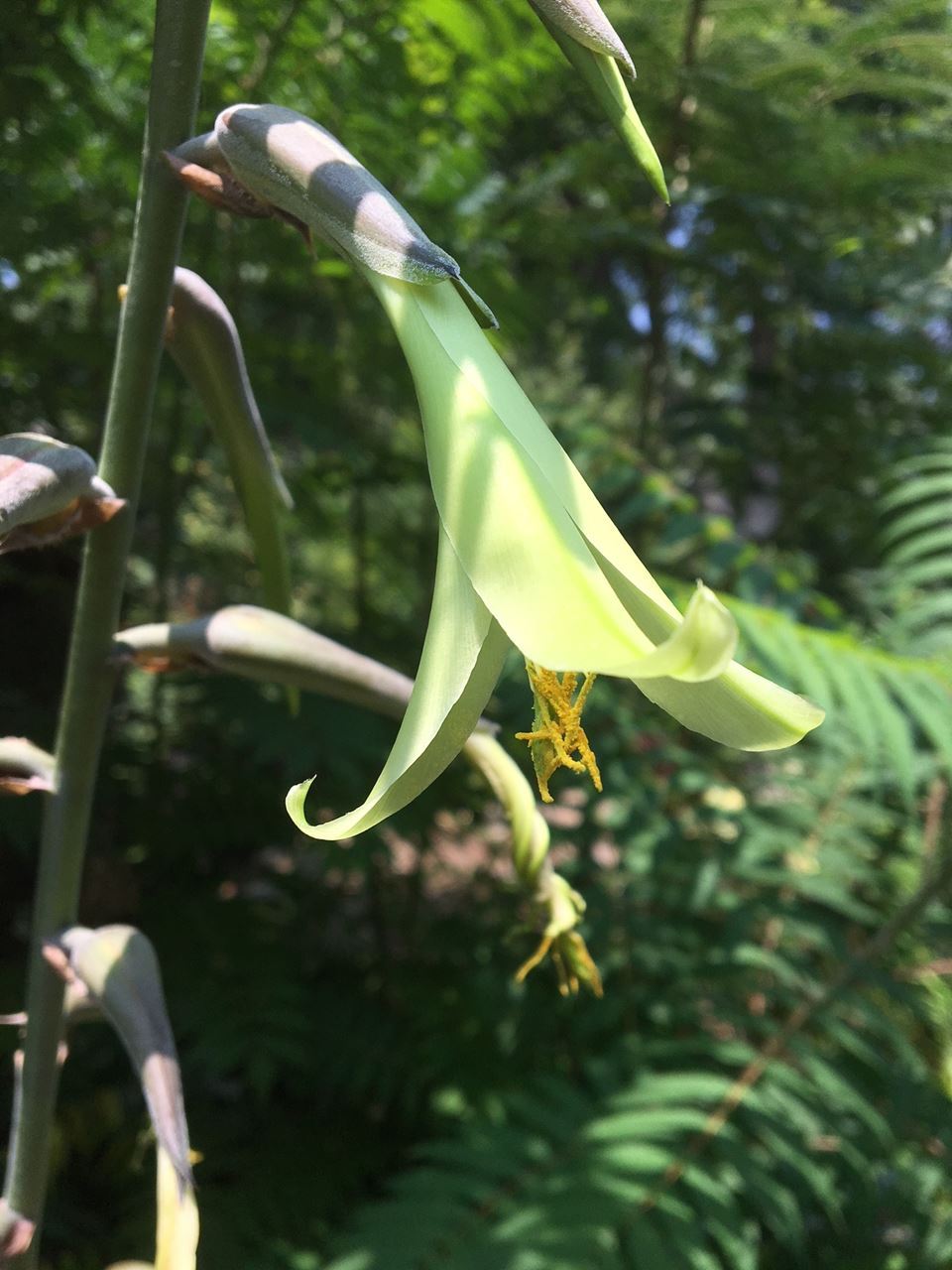
Keeping plants merely alive in zoos is no small feat. Pressures of collection animals (including time-and-space pressure of browse production), non-collection animals, and the visiting public often make for sparser-than-hoped landscapes.
What’s a horticulturist charged with transporting visitors to far away places to do? In Denver, we’ve started growing specialty annuals and perennials for display in key places to help captivate visitors with as small an impact to staff resource as possible. Ideally, a chosen plant will be quick to grow and ostentatious in presentation. If the plant is available to purchase as seed, so much the better, as seeds are typically budget-friendly and provide greater flexibility in propagation timing. (Highly appreciated if you’ve ever had the joy of receiving a shipment of cuttings on a Friday afternoon.)
This year we introduced Puya mirabilis to our plant palette for the first time; it’s been well worth our efforts. Perhaps the fastest of bromeliads to grow from seed; the spiny rosettes of this Patagonian native produce flowers in their second year, allowing for a summer sowing to produce blossoms the following growing season—provided an overwintering spot of at least 20°F can be provided. We grew our plants in a 50–60°F greenhouse through the winter and they quickly achieved flowering size.
Upon setting them out in early spring (around March 15), they showed some signs of cold stress after a 22°F night but rallied brilliantly; and though tasted by rabbits they proved by-and-large pest resistant in the extreme. Their spiny (but not-too-spiny) leaf margins also made them unattractive to unwelcome human attention. They are tolerant of dry conditions; our specimens made a great addition to a garden with somewhat inhospitable southern exposure.
In early August, the rosettes produced dramatic 5-6 foot inflorescences from which dangle waxy green three-inch flowers offset by fuzzy bluish calyces. At least for some photographers, a more attractive subject than the nearby flamingos!
John Murgel, Denver Zoo